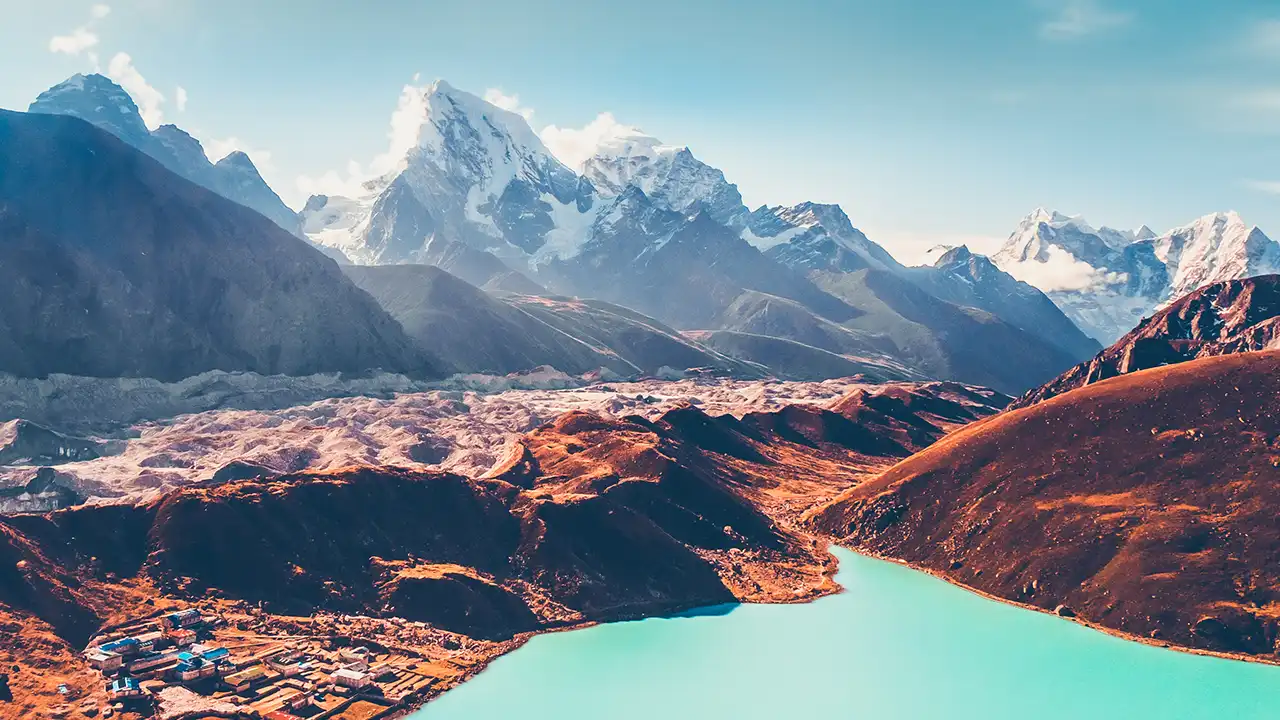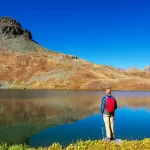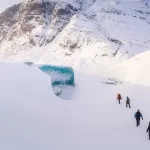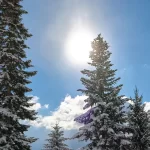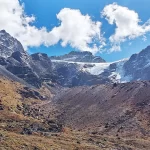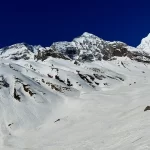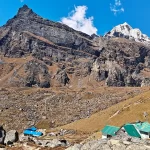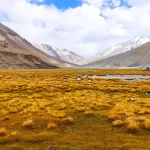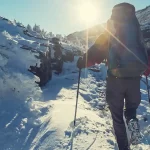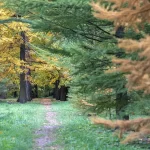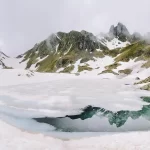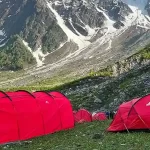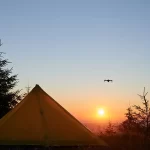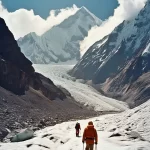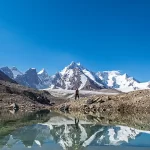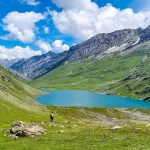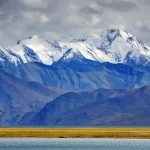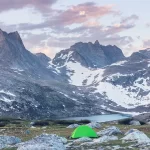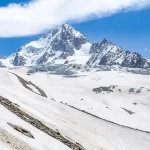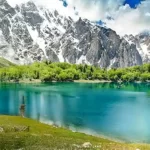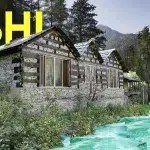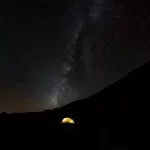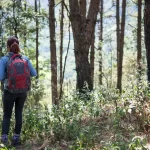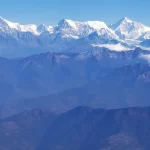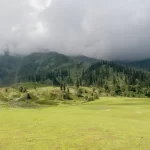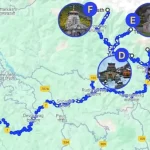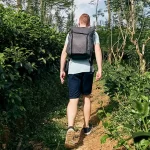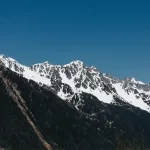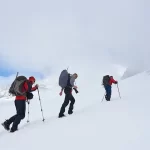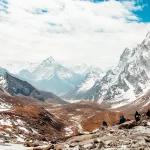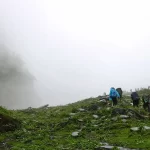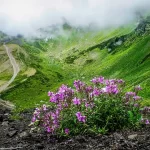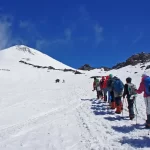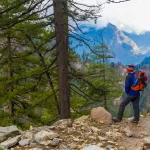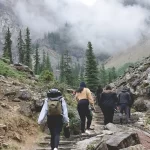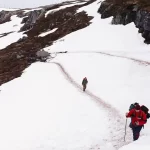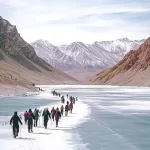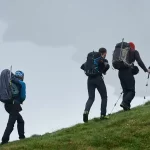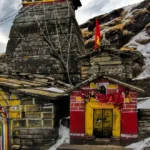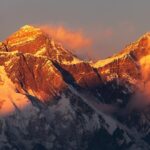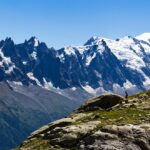There are hikes you do to look at the mountains, and then there are hikes that make you feel them. The Satopanth Lake Trek, in Uttarakhand and starting in the holy town of Badrinath, is one of those routes. This trek is more about peeling off layers — of din, of hurry, of self.
Winding through isolated grasslands and glacial-fed streams, this high-altitude trek reaches Satopanth Tal, a magical lake nestled in 4,600 meters, said to be the site where Brahma, Vishnu, and Mahesh attained enlightenment. The atmosphere is otherworldly — crystal waters reflecting snow-crowned peaks like Chaukhamba, Neelkanth, and Balakun, all standing silently like sentinels.
Why Trek to Satopanth Lake?
Because it’s not a hike — it’s a spiritual journey into the core of the Himalayas. The Satopanth Lake Trek, deep within Uttarakhand, provides the ideal combination of spiritual vibration, unadulterated nature, and pure mountain wilderness.
Unlike busy trails, this trail is far offbeat, divine, and very meditative. It’s ideal for seekers, seasoned trekkers, and those who want to experience the Himalayas — not just view them.
Trek Highlights
Satopanth Tal (4,600 m)
A glacial high-altitude triangular lake with waters as clear as crystal. Local legend has the trinity of gods meditating here.
Peaks of Chaukhamba & Neelkanth
Gigantic, snow-covered Himalayan peaks loom in the distance, providing an unmatchable religious and visual drama.
Spiritual Energy
You will be walking with sadhus and spiritual pilgrims who have done this trek a part of their life’s odyssey.
Alkapuri Glacier & Vasudhara Falls
Optional sidetracks lead you to the Alkapuri Glacier, which is said to originate the Alaknanda River, and the Vasudhara Falls, a 400-ft tall religious cascade.
Offbeat & Sacred
Even though it starts at one of the Char Dham shrines, the trek itself is serene, unvisited, and spiritual.
Day-by-Day Itinerary
Day 1: Drive from Rishikesh to Badrinath (3,100 m)
Long, but scenic drive via Devprayag, Joshimath, and into Badrinath — one of the most sacred towns of India. Overnight stay and acclimatization.
Day 2: Acclimatization and Visit Badrinath Temple + Vasudhara Falls Hike
Short hike to Vasudhara Falls (5 km one way) as warm-up. Back by evening and tour the temple.
Day 3: Trek from Mana Village to Lakshmi Van (9–10 km)
Start your trek from Mana, India’s last village. The trail follows the Alaknanda River, crossing rocky terrain to the Lakshmi Van campsite.
Day 4: Lakshmi Van to Chakratirth (8–9 km)
A steeper ascent into alpine meadows and glacial surroundings. You’ll camp at Chakratirth, a stunning valley surrounded by peaks.
Day 5: Chakratirth to Satopanth Lake and Return (12 km round trip)
Begin early to arrive at Satopanth Tal, immerse in the stillness and majesty, carry out rituals or meditate, and go back to Chakratirth for the night.
Day 6: Return Trek to Mana and Drive to Badrinath
Trek back the same route and drive to Badrinath. Rest, contemplate, or visit the temple again.
Day 7: Return Drive to Rishikesh / Haridwar
Take back not only memories, but clarity, calm, and possibly — a bit of change.
Difficulty Level and Preparation
The Satopanth Lake Trek is difficult to moderate, primarily because of its height and the seclusion of the trail. No technical climbing, but the trail may be bumpy, particularly after Chakratirth.
Recommended Prep:
- 4–6 weeks of cardio (hiking, swimming, running)
- Leg strengthening – squats, lunges, and walking uphill
- Weekend treks with a 6–8 kg backpack
- Mental conditioning – meditation or breathing tends to acclimatize and maintain focus
Best Time to Visit
The best time window for the Satopanth Lake Trek is:
- Mid-May to late June – Summer melt exposes the lake and flowers bloom
- September to mid-October – Clear weather, fewer crowd, and post-monsoon freshness
- Keep away from the monsoon (July–August) because of landslides and trail difficulty.
Permits and Guidelines
- Possess a valid ID
- Forest entry permits are needed (generally handled by trek organizers)
- It’s recommended to hike with a registered guide since the trail is isolated
Spiritual Guidelines:
- Refrain from all rituals and sacred landmarks
- No loud music or alcohol
- Don’t bathe in Satopanth Lake — it is sacred
- Take waste back — leave no trace
Accommodation and Essentials
Stay Options:
- Badrinath hotels and guesthouses
- Tented accommodation on the way (Lakshmi Van, Chakratirth)
What to Bring:
- Warm clothing – thermals, fleece, and down jacket
- Waterproof jacket and trekking boots
- Sleeping bag (below 0°C), sunglasses, gloves, woollen cap
- Headlamp, refillable water bottle, energy bars
- First aid kit and AMS medication
- Personal identification and trekking pole
- Power bank and rain cover for backpack
A Trek Toward the Divine
The Satopanth Lake Trek is not merely a physical climb — it’s a spiritual call. To shed distractions. To proceed in as well as out. To stand at a glacial lake and have fun something primeval stir within you.
It’s a path trod by gods and sages, and now — you. And after sitting on the shores of Satopanth, with the mountains looking on in silence, you come back not only exhausted — but changed.

